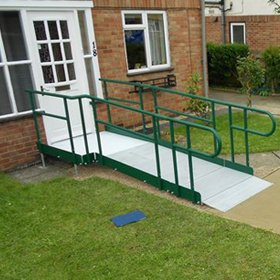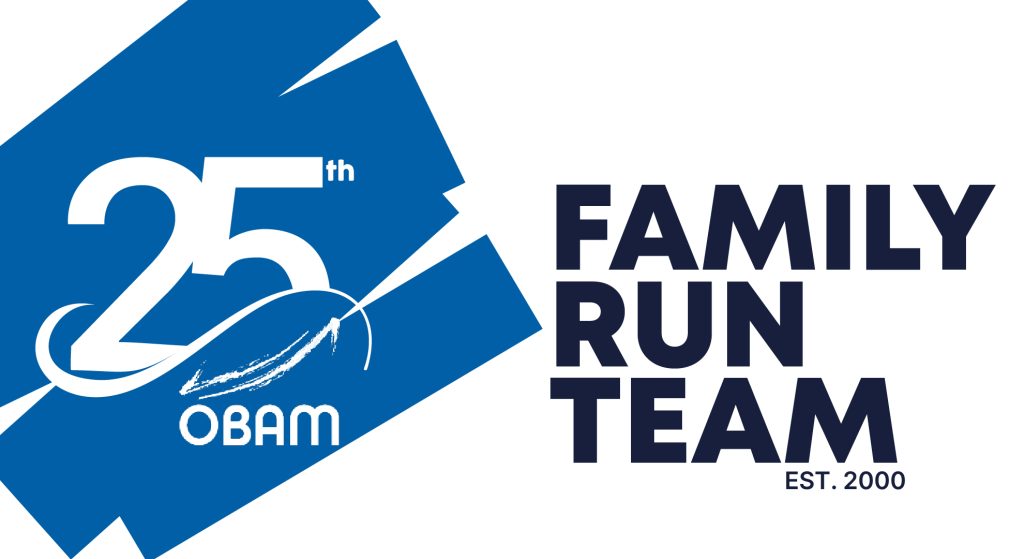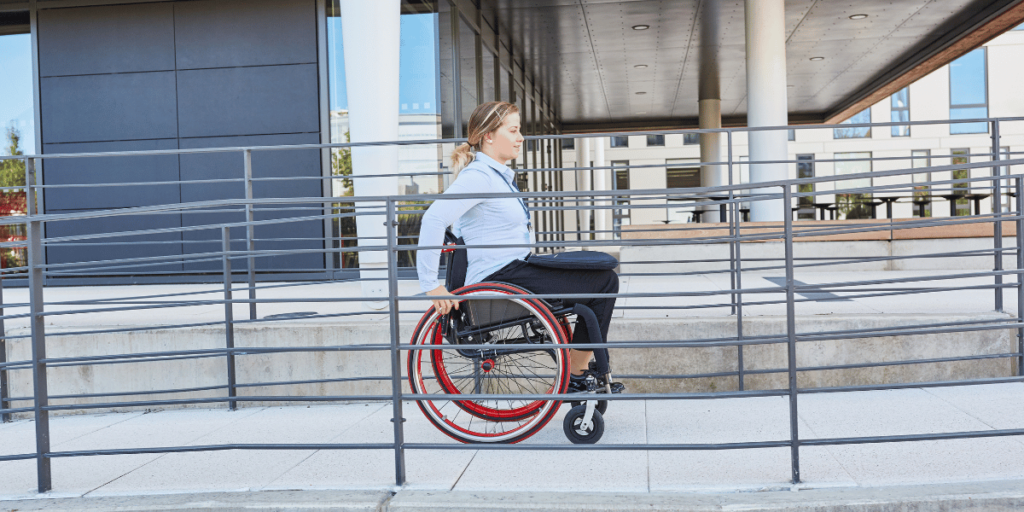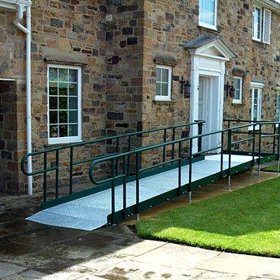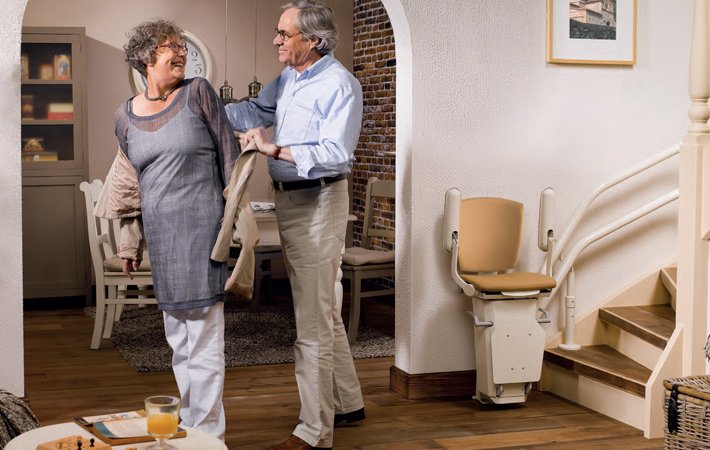Choosing the right wheelchair ramp for your home is one of the most important accessibility decisions you’ll make. It affects daily independence, safety, and quality of life for years to come. With over 20 years of experience helping families across Lincolnshire and Nottinghamshire, we at Obam understand that every home and every wheelchair user has unique requirements. That’s why we’ve created this detailed guide to help you navigate the various options available and find the perfect solution for your specific situation.
The right wheelchair ramp transforms not just physical access, but peace of mind. Whether you’re planning for an elderly family member, adapting your home following an injury, or ensuring long-term accessibility, understanding your options empowers you to make informed decisions that serve you well for decades to come.
Understanding Your Wheelchair Ramp Options
Portable Wheelchair Ramps: Maximum Flexibility
Portable ramps offer immediate solutions for temporary needs or occasional use. These lightweight options, typically made from aluminium, can be positioned when needed and stored away afterwards. They’re particularly useful for visiting properties or managing steps that aren’t used daily.
However, portable ramps have limitations. They require someone to position them each time, which can be challenging if you’re home alone. The weight capacity and length options are also restricted compared to permanent installations. Most importantly, they can present safety risks if not positioned correctly every time or if they shift during use.
For customers who need temporary solutions whilst planning permanent installations, portable ramps can provide interim access. But for daily use, we typically recommend more substantial solutions that offer greater safety and convenience.
Semi-Permanent Modular Systems: The Balanced Choice
Modular wheelchair ramps represent the sweet spot for many homeowners. These systems combine the stability of permanent installation with the flexibility to adapt or relocate as needs change. Individual sections connect to create custom configurations that can navigate around obstacles, change direction, and accommodate different height requirements.
The modular approach allows our engineers to design solutions that work with your property’s existing features rather than requiring extensive modifications. During our free surveys across Lincolnshire and Nottinghamshire, we regularly use modular systems to create access routes that seemed impossible with traditional approaches.
Quality modular systems are engineered to meet strict safety standards whilst remaining adaptable. If you move house or your access requirements change, the system can be reconfigured for new situations, something impossible with permanent concrete installations.
Permanent Built-In Solutions: Maximum Stability
Permanent wheelchair ramps, whether constructed from concrete or permanently installed aluminium systems, offer maximum stability and durability. These solutions are ideal when you need guaranteed long-term access and have sufficient space for proper installation.
However, permanent solutions require careful planning. They typically need building regulation compliance, potential planning permission, and represent significant structural modifications to your property. Once installed, they cannot be easily modified or relocated if circumstances change.
Key Factors in Choosing the Right Wheelchair Ramp
Understanding Gradient Requirements
The gradient or slope of your wheelchair ramp is crucial for safe, comfortable use. The maximum recommended gradient for wheelchair access is 1:12, meaning for every 12 units of length, the ramp rises 1 unit. This translates to approximately 5 degrees of slope.
However, gentler gradients are often preferable, particularly for users with limited upper body strength or those using powered wheelchairs with standard batteries. A gradient of 1:15 or 1:20 provides easier access, though it requires more space and potentially higher costs.
Our technical surveyors calculate the precise gradient needed for your situation, considering the wheelchair type, user capabilities, and available space. We never compromise safety for convenience – if the space doesn’t allow for safe gradients, we’ll explore alternative solutions like step lift installations or other mobility aids.
Surface Materials and Safety Features
The ramp surface significantly impacts safety and usability. Quality wheelchair ramps feature non-slip surfaces that maintain grip in wet conditions, crucial for our British climate. Perforated surfaces allow water drainage whilst providing excellent traction, whilst textured surfaces offer grip without being abrasive on wheelchair tyres.
Edge protection prevents wheelchair wheels from slipping off the sides, whilst appropriate handrails provide additional security for users who can benefit from them. Professional installations include these safety features as standard, whilst some cheaper alternatives may skimp on critical safety elements.
Weather Resistance and Durability
Outdoor wheelchair ramps must withstand British weather conditions year-round. Aluminium construction offers excellent corrosion resistance without the maintenance requirements of steel alternatives. Quality powder coating provides additional protection whilst maintaining appearance over time.
Drainage considerations are built into professional designs to prevent water accumulation that could create hazardous ice in winter conditions. The ability to maintain safe access regardless of weather is essential for daily independence.
Installation Considerations for Different Home Types
Victorian and Period Properties
Older properties often present unique challenges for wheelchair ramp installation. The relationship between front doors and street level, the presence of steps and architectural features, and space constraints require creative solutions.
We regularly work with period properties across Lincolnshire and Nottinghamshire, finding ways to provide access whilst respecting architectural character. Sometimes this involves innovative routing or the integration of multiple accessibility solutions to create practical access routes.
Modern Homes and Accessibility
Newer properties might seem easier to adapt, but they often have their own challenges. Modern landscaping, driveways, and utility locations can complicate ramp installation. However, the building methods typically allow for more straightforward foundation work when permanent solutions are appropriate.
Rented Properties and Accessibility Needs
Tenants needing wheelchair access face particular challenges, as permanent modifications may not be permitted. This is where portable and semi-permanent solutions excel, providing necessary access without irreversible property modifications.
We work with tenants and landlords to find solutions that meet accessibility needs whilst respecting property ownership concerns. Many landlords appreciate improvements that could benefit future tenants, particularly when funded through accessibility grant schemes.
Safety Standards and Regulation Compliance
Building Regulation Requirements
Professional wheelchair ramp installations must comply with relevant building regulations, particularly regarding gradients, width requirements, and safety features. Non-compliance can create safety risks and potential legal issues, particularly for commercial properties or rented accommodation.
Our experienced team understands these requirements and ensures every installation meets or exceeds the necessary standards. We handle the technical documentation and liaison with local authorities when required, removing the bureaucratic burden from customers.
Insurance and Liability Considerations
Quality wheelchair ramp installation includes appropriate insurance coverage and professional liability protection. When you choose established suppliers like Obam, you’re protected by our professional insurance and manufacturer warranties that cover both product and installation quality.
DIY installations or unqualified installers can create insurance complications if accidents occur. Professional installation provides peace of mind that extends far beyond the immediate functionality.
Cost Considerations and Value Assessment
Initial Investment vs. Long-Term Value
Quality wheelchair ramps represent significant initial investments, but the long-term value includes improved independence, safety, and quality of life. When evaluating costs, consider the potential savings from avoiding alternative transport arrangements, care assistance, or property modifications.
The ability to remain in your own home, maintain independence, and avoid care facility costs often makes wheelchair ramps excellent financial investments beyond their immediate accessibility benefits.
Funding Options and Financial Support
Many customers across our service areas benefit from Disabled Facilities Grant (DFG) funding for accessibility improvements. We collaborate with every local authority in Lincolnshire and Nottinghamshire and understand the application processes for various funding schemes.
The DFG scheme can provide substantial financial support for necessary accessibility modifications, including wheelchair ramps. Our team assists with technical documentation and liaising with occupational therapists to support funding applications.
Maintenance Costs and Long-Term Ownership
Quality wheelchair ramps require minimal ongoing maintenance when properly installed. Aluminium systems resist corrosion and weathering, whilst modular designs allow individual components to be replaced if damaged rather than requiring complete system replacement.
Our professional aftercare services provide planned inspection schedules and responsive repair services. The 24/7 emergency support ensures any issues are resolved quickly, maintaining uninterrupted access when you need it most.
The Installation Process: What to Expect
Free Site Survey and Needs Assessment
Every wheelchair ramp project begins with a thorough site survey conducted by our qualified surveyors. This isn’t a sales visit; our surveyors are salaried employees who focus on finding the most appropriate solution for your specific requirements rather than selling the most expensive option.
The survey assesses your property’s access challenges, measures available space, discusses your wheelchair specifications, and considers any future needs that might influence the design. We also evaluate potential obstacles that could affect installation, such as utilities, landscaping, or architectural features.
Custom Design and Technical Planning
Following the survey, our technical team creates detailed designs showing how the wheelchair ramp will integrate with your property. These drawings help you visualise the finished installation and ensure the solution meets your expectations before work begins.
The design phase allows us to optimise the configuration for both functionality and aesthetics. Quality installations enhance rather than detract from your property’s appearance, and careful design ensures this positive outcome.
Professional Installation and Quality Assurance
Installation is completed by our manufacturer-trained engineers who understand the critical importance of precise assembly and secure foundations. We don’t subcontract this essential work; every installation is completed by Obam employees who take personal pride in delivering quality results.
Following installation, we provide complete testing and quality checks to ensure everything functions perfectly. You’ll receive operating instructions, maintenance guidance, and our emergency contact details for ongoing support.
Maintenance and Long-Term Care
Seasonal Maintenance Requirements
British weather creates specific maintenance needs for outdoor wheelchair ramps. We provide guidance on winter preparation, including safe methods for snow and ice removal that won’t damage the ramp surface or create additional hazards.
Regular inspection of connection points, surface condition, and drainage systems ensures optimal performance. Our planned maintenance services can handle these checks as part of scheduled visits, providing peace of mind that your access remains safe and reliable.
Warranty Coverage and Support
All our wheelchair ramp installations include manufacturer warranties covering both materials and workmanship. Unlike some suppliers who limit support to business hours, we provide genuine 24/7 emergency assistance; when you call our emergency number, you speak directly with qualified engineers who can provide immediate help.
Integration with Other Mobility Solutions
Combining Ramps with Indoor Accessibility
Many customers require both external wheelchair access and internal mobility solutions. Wheelchair ramps work excellently alongside stairlift survey requests for homes where both external access and internal level changes need addressing.
Similarly, the integration with hoist survey requests or domestic lift solutions creates complete home accessibility solutions that address all movement challenges thoroughly.
Planning for Changing Needs
The best wheelchair ramp solutions anticipate changing requirements over time. Modular systems that can be extended or reconfigured, designs that accommodate different wheelchair types, and installations that integrate with other potential mobility aids provide excellent long-term value.
Our forward-thinking approach considers not just immediate needs but potential future requirements, ensuring your investment serves you well as circumstances evolve.
Making the Right Choice for Your Home
Selecting the best wheelchair ramp for your home requires balancing immediate needs with long-term considerations, budget constraints with quality requirements, and practical functionality with aesthetic preferences. There’s no single “best” solution that works for everyone; the right choice depends on your specific circumstances, property characteristics, and personal requirements.
At Obam, we believe in providing expert guidance without pressure selling. Our qualified surveyors assess your unique situation, explain all available options clearly, and provide detailed quotations with no obligation to proceed. We serve customers throughout Lincolnshire and Nottinghamshire, with additional coverage in parts of South Yorkshire, East Yorkshire, Humberside, and Derbyshire.
Our local knowledge helps us to understand the specific challenges properties in these areas face, and design solutions that work effectively with regional architectural styles and weather conditions. We’re not just suppliers, we are your partners in maintaining independence and improving quality of life.
Don’t let access challenges limit your freedom or make daily activities more difficult than necessary. Every day without proper accessibility is a day of reduced independence and potential safety risks. Contact our experienced team today to arrange your free site survey and discover how the right wheelchair ramp solution could transform accessibility around your home.
Call us today on 01427 787532 to speak with one of our mobility specialists or to arrange your complimentary site survey. Our friendly team is available to answer your questions and help you take the first step towards improved accessibility and independence.
Remember, with over 20 years of experience, award-winning service, and genuine 24/7 support, we’re here to help you navigate the world with confidence and ease. Your journey to enhanced accessibility and easier living starts with a simple phone call.
Frequently Asked Questions About Home Wheelchair Ramps
Professional wheelchair ramps should have a minimum clear width of 900mm (36 inches) for single wheelchair access, though 1200mm (48 inches) is preferable for easier use and to accommodate different wheelchair types. Ramps that need to accommodate two wheelchairs passing require significantly greater width. Our surveyors assess your specific wheelchair dimensions and usage requirements to determine the optimal width for your situation.
The space required depends on the height you need to overcome and the gradient requirements. For a 1:12 gradient (the maximum recommended), you need 12 feet of ramp length for every foot of height. However, gentler gradients requiring more space often provide easier, safer access. Our surveyors calculate the precise space requirements for your property and can explore alternatives if space is limited.
Most properties can accommodate some form of wheelchair ramp solution, though the specific type varies depending on available space, architectural features, and access requirements. We regularly install ramps on everything from Victorian terraces to modern homes, finding creative solutions that work with existing property features. Our free survey identifies the best options for your specific situation.
Quality wheelchair ramps require minimal ongoing maintenance. Regular visual inspections of the surface condition, connection points, and drainage systems help ensure continued safe operation. We recommend professional inspections annually, and our maintenance services can handle these as part of planned schedules. Winter maintenance involves safe snow and ice removal using appropriate methods that won’t damage the surface.
Yes, various funding schemes can help with wheelchair ramp costs. The Disabled Facilities Grant (DFG) provides substantial support for necessary accessibility modifications, including wheelchair ramps. We work with local authorities across Lincolnshire and Nottinghamshire and can assist with the technical documentation required for funding applications. Our team understands these processes and can guide you through the available options.

